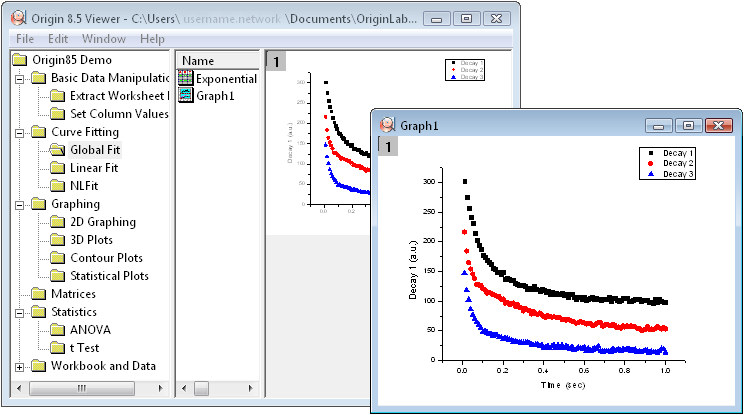

- ORIGIN GRAPHING FOR PC FULL
- ORIGIN GRAPHING FOR PC CODE
- ORIGIN GRAPHING FOR PC PC
- ORIGIN GRAPHING FOR PC PLUS
After aggregation, 53 crop commodities remained in food supplies data, and 132 crop commodities in production data. Plant commodities comprised of the same crop species were aggregated into single commodities representing the crop, e.g., sesame seed oil and sesame seed. Non-food (e.g., fibre for clothing) crops as well as animal product commodities were not included in the analysis. In the production analysis we also included agricultural crops indirectly contributing to human food supplies via livestock production (i.e., alfalfa, clover, and vetch). While food supply data accounts for direct human consumption, production data for crops such as maize and soybean are potentially inclusive of livestock and industrial uses as well as human food.

ORIGIN GRAPHING FOR PC PLUS
National food supply from plants represents national production plus imports plus or minus food reserve changes over the survey period minus exports, quantities used for seed, animal feed, and in the manufacture of non-food products, and losses during storage and transport.
ORIGIN GRAPHING FOR PC FULL
We analyzed the full set of food crop commodities reported in national food supply and pertinent national production data provided by FAO (1) [for food supplies- calories (kcal/capita/day), protein (g/capita/day), fat (g/capita/day), and food weight (g/capita/day) for production systems- production quantity (tonnes), harvested area (ha), and gross production value (current million US$).
ORIGIN GRAPHING FOR PC CODE
Their human migration source code and our source code are both available on Github. Abel and Ramon Bauer at the Wittgenstein Centre for Demography and Global Human Capital. Methods and code for the plots were derived from The Global Flow of People by Nikola Sander, Guy J. Regional production values were formed by summing national production values across countries comprising each region. Regional food supply values (per capita/day) were formed by deriving a weighted average of national food supply values across countries comprising each region, with national values weighted by population.

Because the line width is nonlinearly adapted to the curvature, it corresponds to the contribution size only at the start and end points. The magnitude of contribution is indicated by the width of the connecting line. The direction of the contribution is indicated by both the “native” region’s color and a gap between the connecting line and the consuming/producing region’s segment. The circular plots link the “primary regions of diversity” of crops (regions where crops were initially domesticated and evolved over long periods of time, and where the diversity of traditional crop varieties and related wild plants is especially high) with crops’ current importance in regional food supplies, measured in terms of calories (kcal/capita/day), protein (g/capita/day), fat (g/capita/day), and food weight (g/capita/day), and in regional agricultural production, measured in terms of total production quantity (tonnes), harvested area (ha), and gross production value (current million US$).Įach region has a color representing its own “native” crops and those colors are connected to other regions due the importance of those crops in the diets/agricultural production in other regions. Available online at: About the circular plots Origins of food crops connect countries worldwide.
ORIGIN GRAPHING FOR PC PC
Khoury CK, Achicanoy HA, Bjorkman AD, Navarro-Racines C, Guarino L, Flores-Palacios X, Engels JMM, Wiersema JH, Dempewolf H, Sotelo S, Ramírez-Villegas J, Castañeda-Álvarez NP, Fowler C, Jarvis A, Rieseberg LH, and Struik PC (2016). This work is associated with the publication: This work is licensed under a Creative Commons Attribution 4.0 International ( CC BY 4.0). Achicanoy, Carlos Navarro-Racines, Steven Sotelo, and Andy Jarvis at the International Center for Tropical Agriculture (CIAT).


 0 kommentar(er)
0 kommentar(er)
